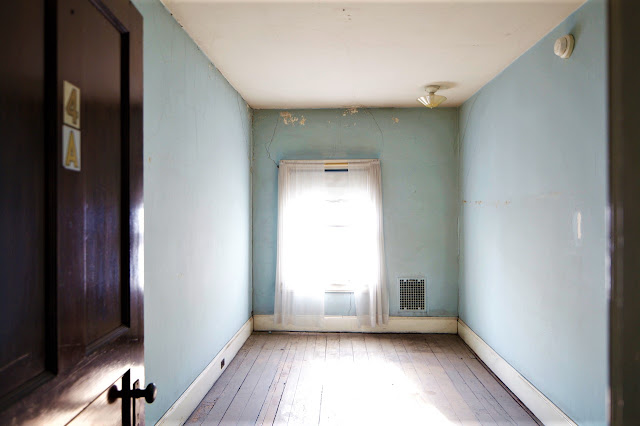“People will do all sorts of things
for money. It’s still the best motive
for murder.”
--Christopher Bush, The Case of the Fourth Detective (1951)
--Christopher Bush, The Case of the Fourth Detective (1951)
During the nineteenth century canny newspaperman
William Henry Smith and his equally canny son, likewise named William Henry
Smith, established a remarkable newsstand and bookstall empire--named,
appropriately enough, WH Smith & Son--at railway stations across the United
Kingdom. Train commuters avidly devouring
detective fiction and thrillers in the form of Hodder & Stoughton yellow
jackets and green and white Penguin paperbacks during the twentieth century heyday
of classic crime fiction in the Thirties, Forties and Fifties often had purchased
their prose treasures at WH Smith & Son bookstalls. The company remained privately held until
1948, when, upon the death of the third Viscount Hambleden (the original
William Henry Smith’s great-great grandson), shares had to be sold publicly in
order to cover the costs of the ravaging inheritance tax (aka “death duties”)
that had laid waste to the company’s once burgeoning coffers. This event--much noted at the time, when the
tax policies of Britain’s lately-installed Labour government were the subject
of contentious debate--inspired Christopher Bush’s 39th Ludovic
Travers detective novel, The Case of the
Fourth Detective (1951).
In previous detective novels that Christopher Bush had published since the Labour Party took power in 1945, the author through his genteel sleuth Ludovic Travers had taken potshots at Labour’s confiscatory tax policies, making withering asides about the depredations of “Comrade” Hugh Dalton and Stafford Cripps, successive Chancellors of the Exchequer in the Labour government during the years 1945-50. However, in The Case of the Fourth Detective, Bush, like contemporary crime writer and Detection Club member Henry Wade in his detective novel Diplomat’s Folly, likewise published in 1951, put Labour tax policy front and center in his book. Some writers of classic British crime fiction felt so strongly about the estate tax issue that they continued to elaborate upon the dread theme even after Winston Churchill and the Tories were restored to power in 1951, the modern British welfare state having proved a hungry creature indeed—see, for example, Henry Wade (yet again) in Too Soon to Die, 1953, and Margery Allingham in The Estate of the Beckoning Lady, 1955, whose titles suggest their author’s agendas (as does “Taxman,” the title of a 1966 Beatles song about the 95% supertax introduced by the government of Prime Minister Harold Wilson, Labour having finally ousted the Conservatives from power again two years earlier). However, in The Case of the Fourth Detective tax policy feels like more like a key plot point than an occasion for a jeremiad.
In previous detective novels that Christopher Bush had published since the Labour Party took power in 1945, the author through his genteel sleuth Ludovic Travers had taken potshots at Labour’s confiscatory tax policies, making withering asides about the depredations of “Comrade” Hugh Dalton and Stafford Cripps, successive Chancellors of the Exchequer in the Labour government during the years 1945-50. However, in The Case of the Fourth Detective, Bush, like contemporary crime writer and Detection Club member Henry Wade in his detective novel Diplomat’s Folly, likewise published in 1951, put Labour tax policy front and center in his book. Some writers of classic British crime fiction felt so strongly about the estate tax issue that they continued to elaborate upon the dread theme even after Winston Churchill and the Tories were restored to power in 1951, the modern British welfare state having proved a hungry creature indeed—see, for example, Henry Wade (yet again) in Too Soon to Die, 1953, and Margery Allingham in The Estate of the Beckoning Lady, 1955, whose titles suggest their author’s agendas (as does “Taxman,” the title of a 1966 Beatles song about the 95% supertax introduced by the government of Prime Minister Harold Wilson, Labour having finally ousted the Conservatives from power again two years earlier). However, in The Case of the Fourth Detective tax policy feels like more like a key plot point than an occasion for a jeremiad.
In the novel Ludovic Travers--now the owner,
since the sudden demise from a heart attack of Bill Ellice, of the Broad Street
Detective Agency--finds his firm called in by Owen Ramplock, who has succeeded
to the chairmanship of Ramplocks, the chain of thirty-four provision shops he has
inherited from his late magnate father, old Sam Ramplock. By the time Ludo arrives at Warbeck Grove,
the block of palatial flats where Owen Ramplock resides when in the City, however,
Ramplock lease on life has expired. Ludo
finds him on the floor of Flat 5 “as dead as they make them: deader than last
year’s hit-song. At the side of the
skull was a bloody gap where the bullet had done its work. Messy work, but only too efficient.” Ramplock’s
call was taken by the Agency’s manager--Jack Norris, formerly a Chief Inspector
at Scotland Yard—and he reports that Ramplock’s last words on the phone were Prince!...What the devil are you doing here! So now Travers, rather than taking on a juicy
job with posh Owen Ramplock, is tasked with trying to find Ramplock’s killer,
by helping his old friend Superintendent George Wharton and young Sergeant
Matthews of Scotland Yard to discover the identity and whereabouts of the
mysterious man named Mr. Prince, who left behind him at the scene of the crime a
cryptic calling card. In bold letters on
the back of the card is a terse message warning You’ll be Sorry.
Certainly there were plenty of people
whom Owen Ramplock--a former playboy turned POW in Italy who until recently had
never faced up to real work in his civilian life--had antagonized. There are, for example, his wife Jane, from
whom he was estranged (it appears Ramplock may have had a mistress) but with
whom he had recently tried to effect a reconciliation, and Jane Ramplock’s
uncle, lately returned from Canada, a character with a large stock of (tall?)
stories by the name of Solverson. Then there
are various officers and staff at Ramplocks: Henry Dale, managing director; Richard
Winter, head of sales; Charles Downe, chief accountant; and Miss Haregood,
Ramplock’s highly efficient secretary.
“A schoolmarm to the life was what I thought her,” dismissively comments
Ludo of Miss Haregood. He is rather more
taken with company typist Daisy Purkes, whom he deems “cute as a kitten with a
black nose,” and he finds opportunity over the course of the case to interview Miss
Purkes more than once on the premises of Ramplocks. It seems that the company’s directors were
trying to determine just how to deal with the crushing death duties imposed on
the business after the demise of old Sam Ramplock. Before his untimely demise was Owen Ramplock
trying to cut a deal for survival with Herringswoods, a mammoth concern with
over one hundred shops in London and the Home Counties?
Kevin Burton Smith of the Thrilling
Detective website, a devotee of the American school of tough crime fiction, has
asserted that while Travers’ murder cases “may lean towards ‘hard-boiled’ they
don’t lean far enough.” For murder
fiction fans happily steeped in the more genteel traditions of Anglo-American
detective fiction of the between-the-wars period, however, Bush may have timed things
just right. Certainly in The Case of the Fourth Detective Ludo seems
to have developed something of the more casual attitude about sex which is
associated with American hard-boiled detective fiction. “Ramplock’s morals didn’t interest me beyond
their possible connection with his death,” Ludo confides at one point. “I’ve skidded about a bit myself in my time
and in my furtive moments I’ve thought monogamy a harshly Christian
virtue.” Recalling Ludo’s romantic revelations
in The Case of the Magic Mirror
(1943) and Christopher Bush’s own amorous flings (at least before he settled
down with his longtime partner Marjorie Barclay), this seems an honest enough
assessment. Perhaps now we know why
Ludo’s wife Bernice appears to spend so much of her married life away visiting friends.
By this time, indeed, Ludo seems in
many ways to have merged with his creator.
In The Case of the Purloined
Picture (1949), for example, we are reminded that Ludo’s native ground is
found in East Anglia, just like the author’s, and it is claimed that Ludo is
“middle class,” putting him closer in social origin to Bush, who was descended
from generations of humble Norfolk farming stock (though the claim that Ludo is
of middle class origins is belied by earlier novels). On American book jackets in the 1950s,
underneath photos of the author, readers were informed that Bush was, like
Ludo, a Cambridge man, though in fact
this claim was untrue. Bush himself
admitted in his memoirs that he had missed his chance to go to Cambridge;
evidently that lost opportunity long rankled.
In having to forego his chance at obtaining
an elite English education, Christopher Bush resembled another prolific mystery
writer and Detection Club member who created a popular genteel surrogate
detective and has been reprinted by Dean Street Press: E. R. Punshon. With his Newcastle sugar broker father having
gone bankrupt and apparently left his family, Punshon at the age of sixteen was
forced, he recalled in mid-life, “to work in the accounts office of a
railroad….After a year or two my office superiors told me gently that they
thought I was not without intelligence but that my intelligence and my work did
not seem somehow to coincide. So I thanked them for the hint, gracefully
accepted it, and departed to Canada…”
During the waning years of the reign of Queen Victoria, Punshon had a
great many larger-than-life adventures in Canada and the American West—including,
he claimed, an escape from a ravening pack of wolves—before he returned to
England and settled down to a writing career of over a half-century’s
duration. As any good novelist would,
Punshon drew on these New World experiences in one of his early novels, Constance West (1905).
In his later years, ill with a wasting
terminal disease, the now elderly Punshon spent some time, in the fall of 1949,
recuperating from an operation at Little Horspen, the charming East Sussex
Tudor home of Christopher Bush and Marjorie Barclay. (Later that year Bush succeeded ER Punshon as
the Detection Club’s treasurer.) The
next year, when Bush was writing The Case
of the Fourth Detective, he amusingly included, in the person of Jane
Ramplock’s uncle Matthew Solverson, a character that may well have been partly
modeled on Ernest Robertson Punshon:
“He’s a delightful person but you may
find him…well, just a bit original….He was a natural born wanderer. He tells the most marvelous stories of all
the things he did in Canada and the States.”
“I know,” I said. “Bar-keep, prospector, hobo,
farm-hand—everything.”
“But how did you know?”
“But how did you know?”
“I didn’t,” I said. “But they always do, at least in books.”




























